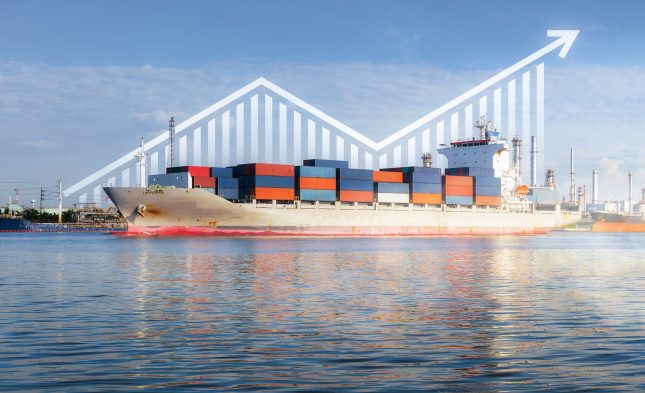Freight Rates Are Ballooning to Pandemic Highs
Just as peak shipping season begins, a container capacity crunch could push rates to higher levels than previously seen with the Red Sea spike. Since January, major shipping and transportation firms such as DHL have been sounding the alarm over a pending container crunch. The Houthi attacks resulted in longer routes with more containers at sea and unavailable to be reloaded. Couple this with inclement weather impacting Chinese, Malaysian, and Singaporean ports, and the crunch is causing freight spot rates to jump as much as 30% over the past couple of weeks.
Read also: Container Rates Surge Amid The Red Sea Crisis
The pandemic gave rise to some of the most severe capacity crunches in recent memory. Freight forwarders were pushed to premium rates just to acquire space guarantees, and the current environment is shaping up similarly. During March and April, many carriers were able to rely on idle vessels to offset some of the longer voyages and keep containers transiting at a reasonable pace. The result, however, is little, if any, excess capacity in the market.
Earlier in the year, the previous high for a container was between $3,000 and $5,000. Rates at that time were nearly double those a year earlier. One of the factors driving inflation during the pandemic years was logistics price increases. The consumer ultimately pays when freight rates increase, and current events suggest a similar pattern moving forward.
MSC had already announced rates of $8,000 to $10,000 for 40-foot containers en route to the US West Coast, while Wan Hai will be charging for “space protection.” Drewry, the maritime shipping research firm, noted a total of 17 canceled sailings between the last two weeks of May and the first two weeks of June on the Transpacific route, and logistics managers were rumored to be moving up peak season from July to June in an attempt to get ahead of any delays.
Adding to the complexity, a potential strike or significant labor slowdown is on the horizon at the US East Coast and Gulf ports in the fall. A looming threat that could disrupt operations significantly, much depends on upcoming negotiations between the International Longshoremen’s Association, who represent the ports, and the US Maritime Alliance.





Leave a Reply